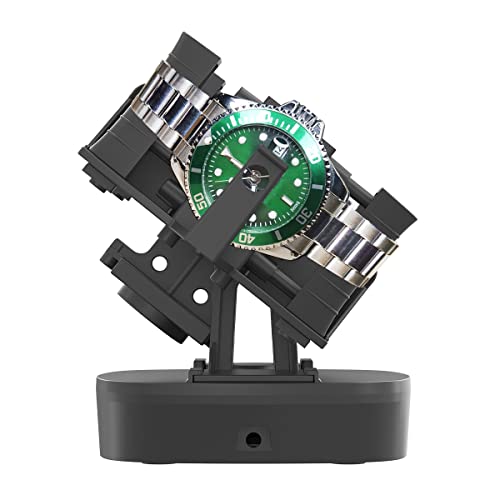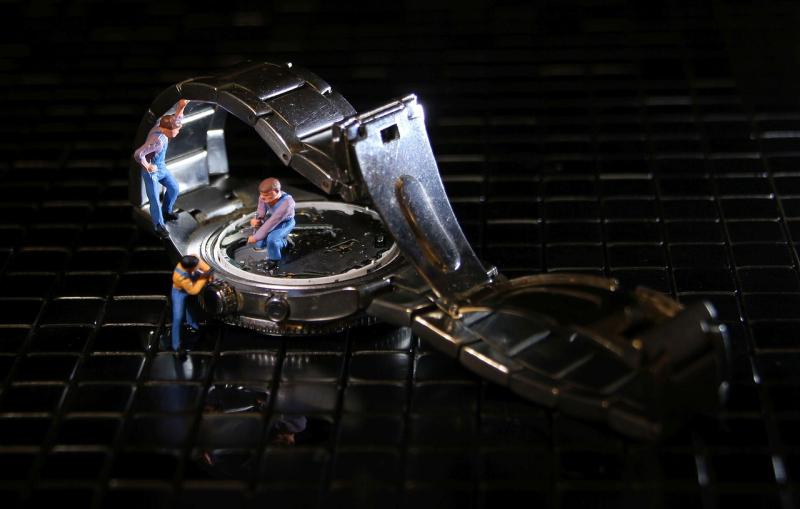When exploring the fascinating world of timepieces, it's essential to understand the different types of watches available. This section serves as a guide to watches, highlighting the various styles and functionalities to help beginners make informed choices. From mechanical to digital, watch types vary significantly in terms of design, technology, and purpose.
Mechanical watches are treasured for their intricate craftsmanship and timeless appeal. These watches rely on a complex system of gears and springs, which are powered by either manual winding or automatic movement. If you appreciate artistry and tradition, a mechanical watch might be your perfect match. On the other hand, quartz watches are known for their precision and reliability. Powered by a battery, these watches are often more affordable and require less maintenance, making them a practical choice for everyday wear.
For those interested in technology, smartwatches offer modern functionality that goes beyond timekeeping. These devices can track fitness, send notifications, and even control other smart devices. When considering what to look for in buying a watch, think about how you intend to use it. Are you looking for a statement piece, a reliable daily wear, or a gadget that keeps you connected? Each type of watch serves a different purpose, so it's important to match your choice with your lifestyle.
In addition to style and functionality, understanding specific features can enrich your watch experience. Some watches come with added functionalities like water resistance, luminous dials, or chronographs. This brings us to our guide to watch functionality, which emphasizes the importance of selecting a watch that aligns with your needs. Whether you're an active individual who loves sports or someone who prefers a classic look for formal occasions, knowing these details will help you find the perfect timepiece.
Key Features to Look For
When diving into the world of horology, it’s essential to know what to look for in buying a watch. This guide to watches will help you navigate the key features that make a watch not just a timekeeping tool, but a reflection of your style and needs. Here are some fundamental aspects to consider before making your purchase.
First and foremost, think about the watch movement. There are primarily three types: quartz, mechanical, and automatic. Quartz watches are known for their accuracy and low maintenance, making them ideal for beginners. Mechanical watches, on the other hand, are powered by intricate gears and require winding, which often appeals to enthusiasts. Automatic watches are a step up, using the wearer’s wrist movement to wind the watch, blending elegance with convenience. Understanding these movements is a crucial part of any guide to watch functionality.
Automatic Watch Winder for 2 Watches
Keep your timepieces perfectly wound and ready to wear with our elegant Automatic Watch Winder designed for two watches
Product information
$16.99
Product Review Score
4.35 out of 5 stars
76 reviewsProduct links
Another vital feature to consider is the watch's material. The case can be made from stainless steel, titanium, ceramic, or even gold. Each material offers different benefits; for instance, stainless steel is durable and resistant to corrosion, while ceramic is scratch-resistant and lightweight. Your lifestyle and preferences will dictate what material suits you best. Remember, the right choice in material can enhance not only the watch’s durability but also its aesthetic appeal.
Lastly, think about the watch’s features and functions. Do you need a simple timepiece, or are you looking for additional features like a chronograph, date display, or water resistance? This guide to watches emphasizes the importance of these functionalities based on how you plan to use the watch. A practical approach will ensure that you select a watch that fits seamlessly into your daily life, whether you’re diving, running, or simply attending a meeting.
Choosing the Right Watch Style
If you're unsure about what to look for in buying a watch, start by identifying the scenarios in which you'll wear it most often. For formal events, a sleek dress watch with a minimalistic design might be ideal. On the other hand, if you're an outdoor enthusiast or someone who leads an active lifestyle, a sporty watch with durability and functionality features would be more suitable. Understanding the style that fits your life can simplify the selection process.
Another aspect to consider in this guide to watch functionality is the materials used in the watch's construction. Metal, leather, and fabric bands each offer distinct aesthetic benefits and comfort levels. Think about the overall look and how it pairs with your wardrobe. Additionally, the watch can be a statement piece. Choosing a watch that truly represents your personality can enhance your style and boost your confidence.
Lastly, don’t forget about the color and features. Silver and gold are classic choices, but vibrant colors can also make a bold statement. Some watches come with special features like water resistance, smart technology, or intricate dials, adding both practicality and complexity to your choice. By understanding the various elements of watch styles, you'll be better equipped to make an informed decision, aligning with this guide to watches for beginners.
Tips for Watch Care and Maintenance
To keep your watch in great condition, follow these simple tips for care and maintenance. A well-maintained watch not only looks better but lasts longer too. Whether you’re new to the world of horology or brushing up on the basics, these guidelines will enhance your understanding of what to look for in buying a watch and how to take care of it.
Firstly, it’s important to understand the importance of regular cleaning. Sweat, dirt, and dust can accumulate on your watch, especially if you wear it daily. Use a soft, lint-free cloth to wipe down the case and bracelet regularly. For deeper cleaning, you can use a damp cloth or soft brush with mild soap, but avoid submerging watches that aren’t water-resistant. This simple act of care can help maintain the shine and function of your timepiece.
Another aspect of watch maintenance involves protecting it from excessive impact and extreme conditions. Although most watches are built to withstand daily wear and tear, it’s a good idea to avoid dropping your watch or exposing it to magnetic fields, which can affect its accuracy. Understanding the basics of guide to watch functionality will help you make informed choices about the suitability of your watch for different activities.
Lastly, consider servicing your watch regularly, especially if it’s an automatic or mechanical piece. Many watchmakers recommend an overhaul every 3 to 5 years, depending on how often you wear it. Regular servicing will keep your watch running smoothly and can help catch any potential issues before they become serious problems. Remember, caring for your watch properly adds to its lifespan and maintains its value over time.




